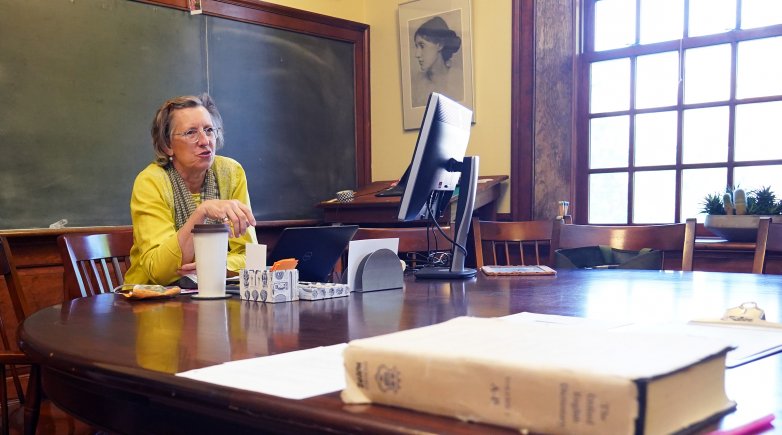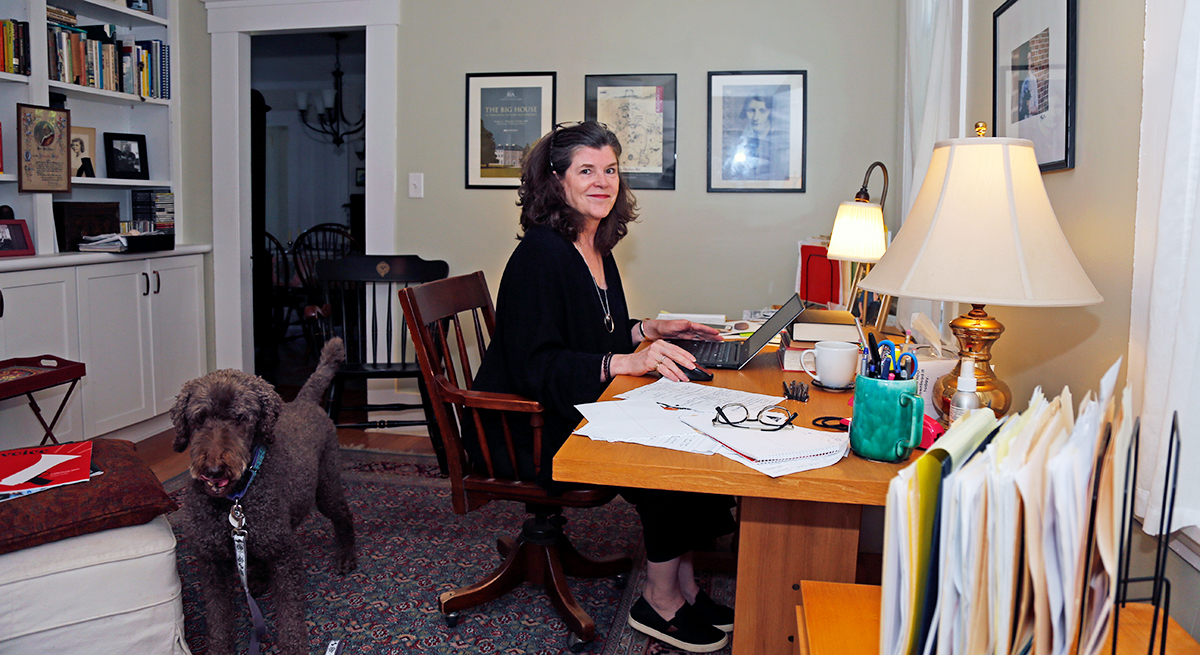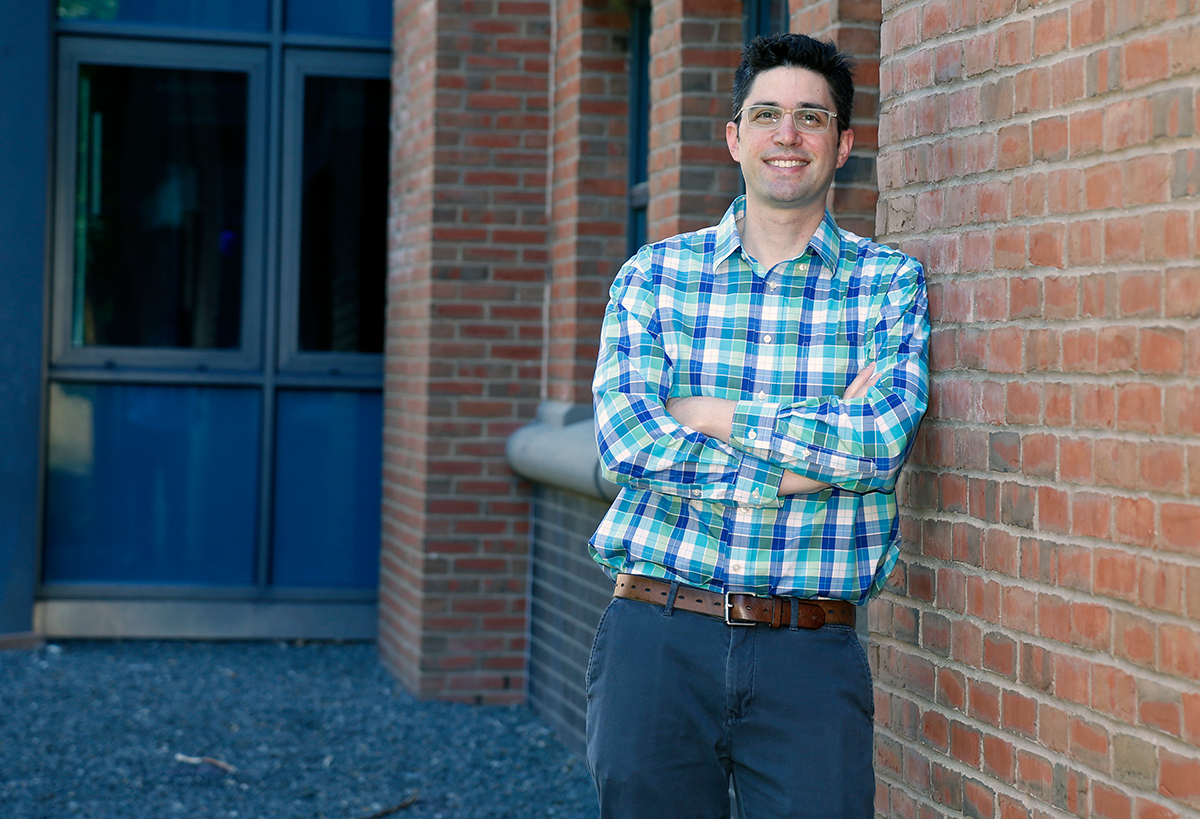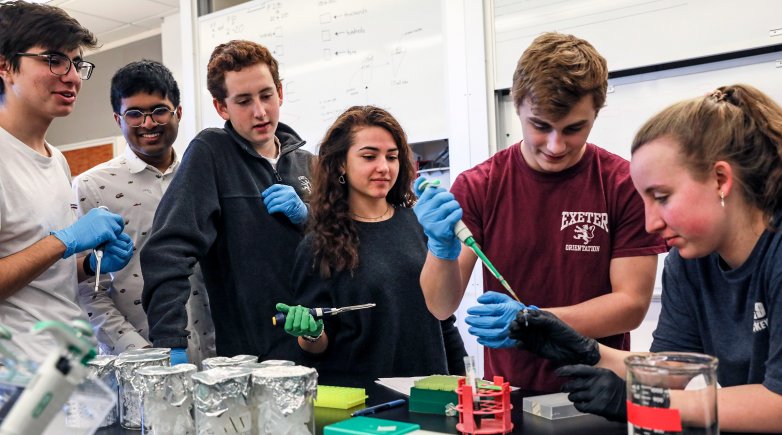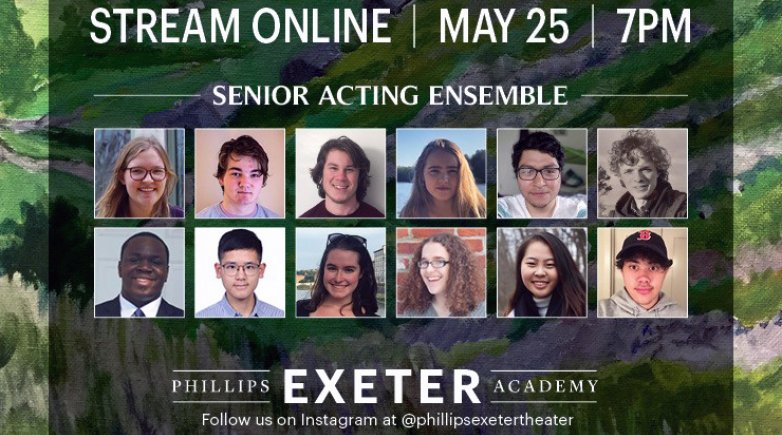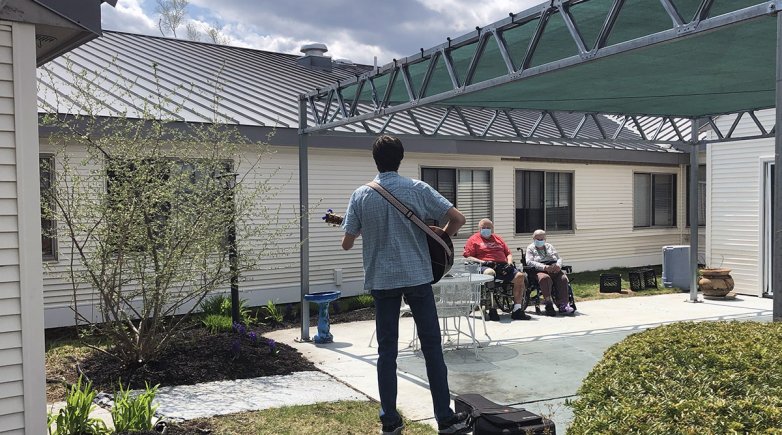Campbell missed that face-to-face interpersonal interaction, too. While he worked hard at making videos for asynchronous classes, the in-person feedback was absent. “I would try to be not too dry and a little bit silly and tell my dumb jokes and hope the students would think they were amusing,” he says. “But not being able to interact with them, it just wasn’t the same.”
Even synchronous classes, he says, had a different feel. “Other teachers will also tell you: We’re used to awkward silences at the Harkness table, but this was different.” While synchronous classes were more interactive, Campbell was always aware that they were more interactive for some more than others.
“They were interactive for those who were in a reasonable time zone, or within reasonable proximity to this time zone, for those for whom it was not 2 a.m. where they were when class was happening, and if they didn’t have other home responsibilities. Teachers love the interaction, sure — that’s what we enjoy about teaching. But we have to keep in our minds what’s working for our students. And particularly now, we can’t forget about the students in difficult situations.”
Future iterations of distance learning, Campbell says, will require new pedagogical tools that can specifically encourage discussion in a Zoom context. “I was trying to think the other day, ‘What is a good icebreaker in that situation? What’s a good Zoom icebreaker?’ And I was lucky this term to be teaching upper-level classes with five students I knew already. ... I can see having a totally different experience where meeting all of your students online for the first time and then trying to have this discussion class — I can see that being a whole other challenge.”
To collectively tackle some of the hurdles imposed by distance learning, Campbell and the other computer science teachers met weekly; they also met weekly as part of the larger Science Department. “I have a good understanding of what my computer science colleagues did, a pretty good understanding of what my science colleagues did, but outside of that I have less,” he says. “I was also in a cross-departmental group that met daily, and we talked about technology and distance learning through the lens of equity. It was helpful in that it was my chance to hear from teachers in other departments on a regular basis, learning the kinds of things they were dealing with and how they were dealing with them.”
That continued sharing of experiences and knowledge exchange is key, Campbell says. “I think there’s a lot we can learn from one another in figuring out how to best accommodate students going forward with distance learning. I know somebody else is doing something better than me on campus and I want to hear from that person. And I like to think that there are some things I figured out pretty well, and I’d like to share that with others. That’s the way we move forward. As long as our focus is caring about the students, that’s what they’re going to respond to.”
In June, Exeter enrolled the entire faculty in a weeklong course in designing for online learning. Central to the faculty’s work that week were the cross-departmental discussions Campbell described, in which faculty members considered the online-teaching practices, tools and strategies they were learning through the lenses of Harkness, equity and anti-racism. And every afternoon that week, each department worked to develop a coherent plan for summer work on curriculum, course design, assessment, and pedagogy, so they would be prepared, Wolff says, to offer “top-notch online courses in the fall.”
“To say that spring term was challenging is an understatement,” Wolff says. “But my colleagues’ commitment to doing their best for our students was, as always, inspiring. It was great to come together at the end of the term and talk across departments about what we care about: teaching kids.”
Editor's note: This article first appeared in the summer 2020 issue of The Exeter Bulletin.
